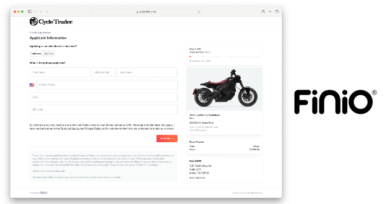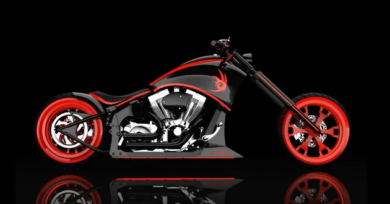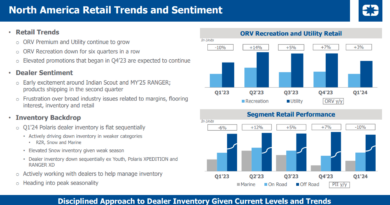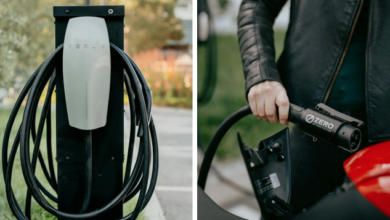OPINION – Annual V-Twin Expo moves into ‘class act’ category
CINCINNATI — I remember when Jim Betlach launched his V-Twin Expo here six years ago, and it wasn’t pretty. If you described it as “rough around the edges,” you would have been kind. But many of those early supporters stuck with it, and Jim just kept plugging ahead, making improvements every year. That’s one reason why Powersports Business magazine named Jim as one of its top business leaders last year.
This year, things were different. This year, the V-Twin Expo was a class act. Overall, it had a professional look about it; the important players were there (even some Metric-side guys), and there were plenty of new products to look at and enjoy. But products are only part of the story; I find talking with the exhibitors about our industry and the trends they see as even more valuable. But more about those later.
In this space about a year ago, I forecast that soon Cincinnati would be the primary cruiser and custom motorcycle trade show for dealers, OEMs and aftermarket companies. I believe that time has come. At the same time, I said the Dealer Expo in Indianapolis would become primarily a venue for ATV/off-road equipment and a place where new suppliers and importers of equipment from Asia and Europe would display their wares. I believe that’s the case this year.
Betlach, founder of the V-Twin Expo and its guiding force since the beginning, wouldn’t provide attendance figures when we talked the other day, but he did say this year’s crowd matched last year’s 12,000 figure early Saturday afternoon.
Exhibitor renewals for next year were at about 60 percent shortly after the show. “Basically, we expect to have 100 percent,” he says. Betlach’s biggest problem is that there just isn’t enough space at the Cincinnati Convention Center, even with the expansion on the second floor. “I really don’t want to take people off the main floor,” he says, “but the second floor will be a very nice venue next year” when the construction is finished.
Walking The Floor
I talked with many people while walking the floor, but a few conversations stand out because they reflect trends that go beyond the individual companies involved.
Wil Garland, CEO of American IronHorse, noted January was a very soft month for many, and that it followed a fourth quarter that was very slow. “Everyone I talked with had a horrible fourth quarter; everybody is down,” he said. “People who supply engines and frames and exhausts — those are all down significantly. It’s just lack of demand.”
Meanwhile, IronHorse is gearing up for what it expects will be a strong season. Garland expects AIH sales to be somewhat above those of 2005, but he wouldn’t put a number on it.
On the accessories side, AIH is offering dealers nearly 60 items this year, up from only about a dozen last year. AIH also is offering nearly 80 separate apparel items this year through its new apparel program.
Cincinnati has become the most important dealer show of the year for IronHorse, said Garland, based upon the company’s experiences with shows in Indianapolis and Las Vegas last year.
Garland is a member of the MIC’s American V-Twin Committee, which held its regular meeting at the show. Gary Sipes, AIH’s director of national sales, works with the committee. “The general public has been led to believe that loud bikes are custom choppers,” he says. “That’s not true, and we have to change that. For a long time, loud pipes made you cool, but it’s up to us and the news media to make it cool not to have the loudest pipes on the block.”
Among pipe manufacturers, there was wide disagreement about the best strategy for dealing with growing noise complaints. On one hand, there was talk of a 96-db level certification by an organization such as the MIC. The certification logo would be stamped on the end of the pipe. This approach, say supporters, would protect OEMs, manufacturers and dealers. Others say it’s simply best to take a low profile stance.
One aftermarket pipe manufacturer who is taking a unique approach to the situation is National Cycle. The Illinois company introduced an adjustable pipe using a valve that bypasses the baffles and lets the rider select a straight pipe option. The adjustable pipe system, called the Peacemaker, has a valve that is activated by an electric switch on the handlebar.
Hardbikes and Bob Kay took dead aim at the desire of consumers to have their own custom motorcycle, even if they can’t spend $30,000 and more for a bike. Kay and his Hardbikes company plans to help consumers build their own bikes fit specifically to the buyer. This is perfect for women, who want a smaller bike that may fit them better than a standard production model.
Hardbikes has a patented machine and software system that helps the rider measure a number of variables, including seat height and foot peg and handlebar positions. The consumer can select from several options and “assemble” his own bike to fit his needs. The system’s software prevents the consumer from using parts that do not function properly together so he can’t design a bike that isn’t safe or inoperable.
A Final Note
There were plenty of awards given out at the V-Twin Expo — after all, what’s a show without an award? At any rate, here are some of the most interesting ones:
Joe Delmont is founding editor of Powersports Business magazine. He can be reached at 952/893-6876.




